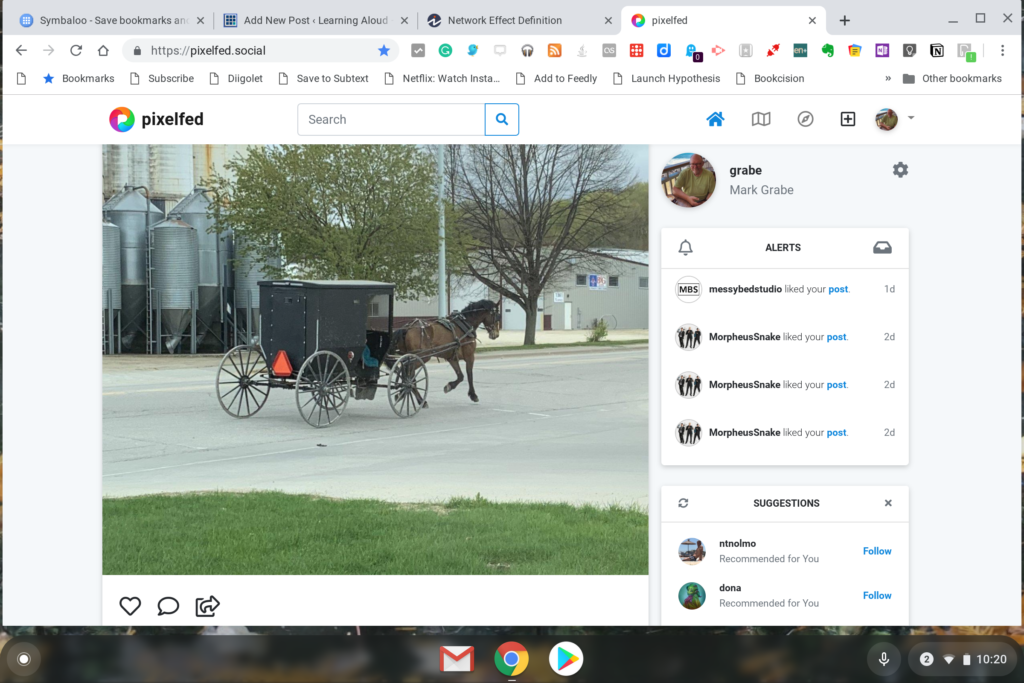I want to be clear about the content that follows. I am a big fan of the Brave browser and what I have taken to calling the Brave ecosystem. If you are unfamiliar with this browser, you might read some of my earlier posts. I believe the Brave ecosystem has the potential to address several of the interrelated issues dealing with the funding of online services and content and personal freedoms. Potential is the key word here and the comments that follow most concern what it will take for this potential to be realized. These comments assume you have some familiarity with what Brave browsers as an alternative to ads and ad blocking.
I find Brave a very interesting Internet company. I have used the Brave browser for some time and I provide funds within the Brave ecosystem to compensate content and service providers when the Brave browser blocks ads. My concerns mostly concern how Brave has allocated time and resources to develop different aspects of its online ecosystem. The priorities are not consistent with what I find to be the most important of the features Brave promotes. Picking among these features will defeat what I think is the potential of Brave.
My present concerns are listed below. I see many of these concerns as interrelated, but I list them individually for greater clarity.
- The functioning of the Brave ecosystem (browser and related services) is not well documented either in terms of how things work or by providing descriptive data regarding user activities. I struggle to understand exactly how things work. I understand that some of this information is only shared with investors, but I regard my time and money as an investment and I am frustrated as an early adopter not to be able to learn more. For example, what proportion of Brave users have contributed funds to compensate content providers who have had their ads blocked?
- I am unclear on why the underlying exchange of funds within the Brave ecosystem relies on a cryptocurrency. Getting most users to put money into BAT (the cryptocurrency) is not what I would describe as a simple process and this complexity will limit investment that would be used to reward content creators. Is this a reasonable expectation of casual tech users?
- Things with the Browser and Browser functions just break and the user experience often requires that users share their concerns through a “community” rather than by directly requesting assistance from the company. Problems I have had are mentioned by the community, but these problems were not resolved and I had to use the developer version for a period of time simply to make certain the funds I had allocated to content creators were actually dispersed. The system claimed funds were not available even when my wallet contained more than $100. I assume this is an allocation of development resources issue, but a buggy experience is not going to attract users.
- There is a lack of user integration across devices – some features of Brave (bookmarks) synch, but the most important and unique features do not. What it comes to earning and spending BAT, your identity is associated with one device and this device presently must be a computer (laptop or desktop). Your wallet is associated with this single device and the record of the sites you visit only matters from this device. This means the payment of BAT you have allocated to offset blocked ads and the rewards you receive for viewing Brave ads only happen from a single device. Is the computer really the device most of us spend most of our time using? Even if it is, what proportion of total time spent is expended on this single device? Note that even the use of multiple desktops or a desktop and a laptop involve distribution of viewing time.
Taken together, these issues limit the likelihood Brave will be more than just another option for blocking ads and Brave is not doing enough to take steps to work against this narrow focus. Using the Browser to block ads takes little effort and most will likely stop with this feature. Brave also ignores ways it could interconnect features to offer greater balance in how it supports both consumers and creators. It appears willing to compensate consumers for viewing Brave controlled ads without requiring some part of this compensation being used to reward content creators. My interest in Brave is less about blocking ads and protecting my privacy than it is about addressing the reasons ads exist in the first place. I can block ads and protect my privacy in multiple ways. What makes Brave interesting is the “potential” to assure content creators are compensated while protecting content consumer privacy. It is this combination that is essential for the long-term growth of the Internet.
![]()

You must be logged in to post a comment.